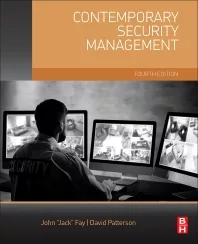Travel Risk Management in COVID-19 & Beyond

"CH200824012" by International Monetary Fund is licensed under CC BY-NC-ND 2.0
For many employees, traveling on business is a small treat and overall perk. Nothing beats sightseeing after a day of meeting with new, potential or old clients in a different locale — especially if it’s in a warmer climate.
However, COVID-19 has changed how often employees travel. Companies must stay current on COVID-related travel restrictions in and out of the U.S., and must monitor CDC and state department guidelines for testing, proof-of-vaccination and quarantine mandates. That’s now more important than ever with the rise of the highly contagious omicron variant.
Additionally, other factors, like severe weather, active shooters, civil unrest and cyber crime affect employee safety when traveling on business.
Companies are accountable for harm to employees on company time. Being unprepared is costly and being uninformed leads to mistrust of management, which affects employee morale. For example, employee anxiety can translate into hesitancy to travel or relocate. This could mean losing valuable face-to-face business opportunities.
Take the recent shutdown of I-95 in Virginia due to heavy snowfall; if it was one of your employees stuck in the lineup of cars, would you be prepared to help? Creating a travel risk management (TRM) plan allows for a consistent chain of action in events like these.
There are two critical elements of TRM:
1. Monitoring
Anticipating and preparing for risk requires real-time critical event intelligence that incorporates the proximity and movement of your people. Only then can you focus resources on relevant precautions and targeted, timely alerts.
2. Responding
Effective critical event response relies on operational preparedness. This means having processes in place to locate, communicate, assist and potentially extract your people, across borders, time zones and governments.
Common Mistakes; Big Consequences
Here are a few common mistakes in when making a TRM plan:
Limited scope: If your risk planning and protection only applies to overseas travel, an entire subset of employees are not receiving the attention they need. A company’s responsibility actually extends to all employees — whether on the road, at their cubicle or in their home office — as well as their family members, your board, consultants, contractors, suppliers and even customers and visitors to your facilities.
Unbounded scope: Conversely, an approach that gives equal weight to every critical event in every time zone can paralyze your security team. Without proper focus, relevant information gets overwhelmed by noise, which slows your ability to pinpoint the relevant risks, leaving your team without an efficient response.
Ad hoc: A program that relies on manual processes and disconnected systems can leave people anxiously awaiting assistance. When response teams are forced to call around to reach the right decision-makers, the process is impeded, the chain of command is broken and valuable time is lost.
You Can’t Spell ‘Tomorrow’ Without TRM
Better information leads to improved preparation. Inadequate travel risk management that only includes meager duty-of-care provisions leaves your personnel exposed and your organization legally vulnerable.
Conversely, a robust TRM plan supported by AI gives your people the confidence to know they’ll always be informed and protected.
Looking for a reprint of this article?
From high-res PDFs to custom plaques, order your copy today!








